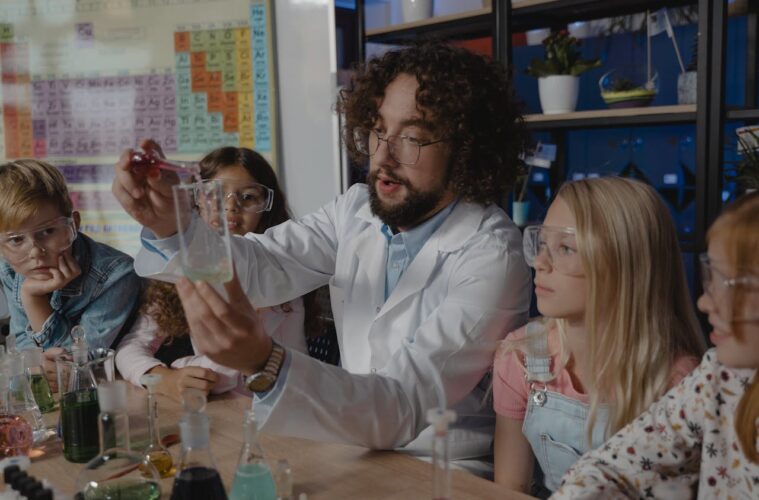The realms of science education are undergoing a significant transformation, catalysed by the integration of modern test equipment in classroom settings. This new era of learning is not only redefining traditional methodologies but also enhancing the empirical understanding of scientific principles among students. This article explores the innovative ways through which contemporary test equipment is revolutionising science education, offering educators and students alike an exciting, efficient, and effective learning experience.
Enhancing Student Engagement
Gone are the days of passive learning where students played a minimal role in their education. Modern test equipment empowers students by making them active participants in their learning journey. Through interactive sessions and experiments, students are more engaged and motivated to learn, leading to a more enjoyable and meaningful educational experience.
Preparing Students for the Future
The incorporation of modern test equipment in science education is not just about enhancing the current educational experience. It is also about preparing students for their future careers. By familiarising students with the latest tools and technologies used in scientific research and industry, educators are helping to equip future generations with the skills and knowledge necessary to advance in a rapidly evolving scientific landscape.
For instance, understanding how to utilise advanced tools like the source meter can significantly improve the efficiency of experimental setups, offering students hands-on experience with all-in-one power testing capabilities that are crucial for various scientific applications.
Promoting Collaborative Learning
The use of modern test equipment in the classroom promotes collaborative learning among students. Working in teams on experiments or projects, students learn to communicate effectively, share knowledge, and support each other’s learning. This collaborative environment not only improves their understanding of scientific concepts but also develops interpersonal skills crucial for their future careers.
The Role of Technology in Science Education
Technology plays a pivotal role in the integration of modern test equipment into science classrooms. With advancements in technology, test equipment has become more accessible, user-friendly, and versatile, making it an invaluable asset in science education. This modern equipment allows educators to demonstrate complex scientific principles in simpler, more understandable ways, making science more approachable and interesting for students.
The Shift to Hands-On Learning
The inclusion of modern test equipment in science classrooms is facilitating a shift from theoretical learning to a more hands-on, experiential approach. This transition is critical in helping students develop a deeper understanding of scientific concepts, through the direct observation and manipulation of phenomena in real-time. The hands-on approach also aids in fostering critical thinking and problem-solving skills, essential competencies in a scientific career.
Global Collaboration in Science Education
The accessibility of modern test equipment opens up opportunities for global collaboration among students and educators. These tools can connect learners from different parts of the world, allowing them to share data, participate in joint experiments, and engage in cross-cultural scientific discussions. Such experiences enrich students’ educational journeys, fostering a global perspective and enhancing their understanding of international scientific cooperation and its significance in solving worldwide challenges.
Bridging Theoretical Knowledge and Practical Application
One of the standout benefits of incorporating modern test equipment into science education is the bridging of the gap between theoretical knowledge and its practical application. By using state-of-the-art tools and technologies, students can directly apply theoretical concepts in practical experiments, seeing firsthand the real-world applications of their studies. This not only enhances their learning experience but also prepares them for future scientific endeavours.
Adapting to Technological Advancements
As the world continues to evolve at a rapid pace, so too must our educational practices. The dynamic nature of technology necessitates an educational environment that can adapt and respond to new discoveries and innovations. Incorporating modern test equipment into science curriculums ensures that education remains relevant and responsive to the current and future technological landscape, preparing students to be resilient and adaptable in the face of change.
Environmental Awareness and Sustainability
Incorporating modern test equipment not only advances scientific learning but also instills a sense of environmental responsibility in students. By engaging with technologies that can measure and analyse environmental data, learners become more conscious of their impact on the world and the importance of sustainability in science and technology. Educators can leverage this awareness to emphasise the critical role of science in addressing global environmental challenges.
Final Thoughts
The integration of modern test equipment into science classrooms is revolutionising the way students learn and engage with scientific concepts. This transformation is not only making science education more interactive, engaging, and effective but is also preparing students for a future in which they can thrive. By embracing these innovative tools and approaches, educators are setting the stage for a new era of science education that is more empirical, interactive, and empowering for students.



